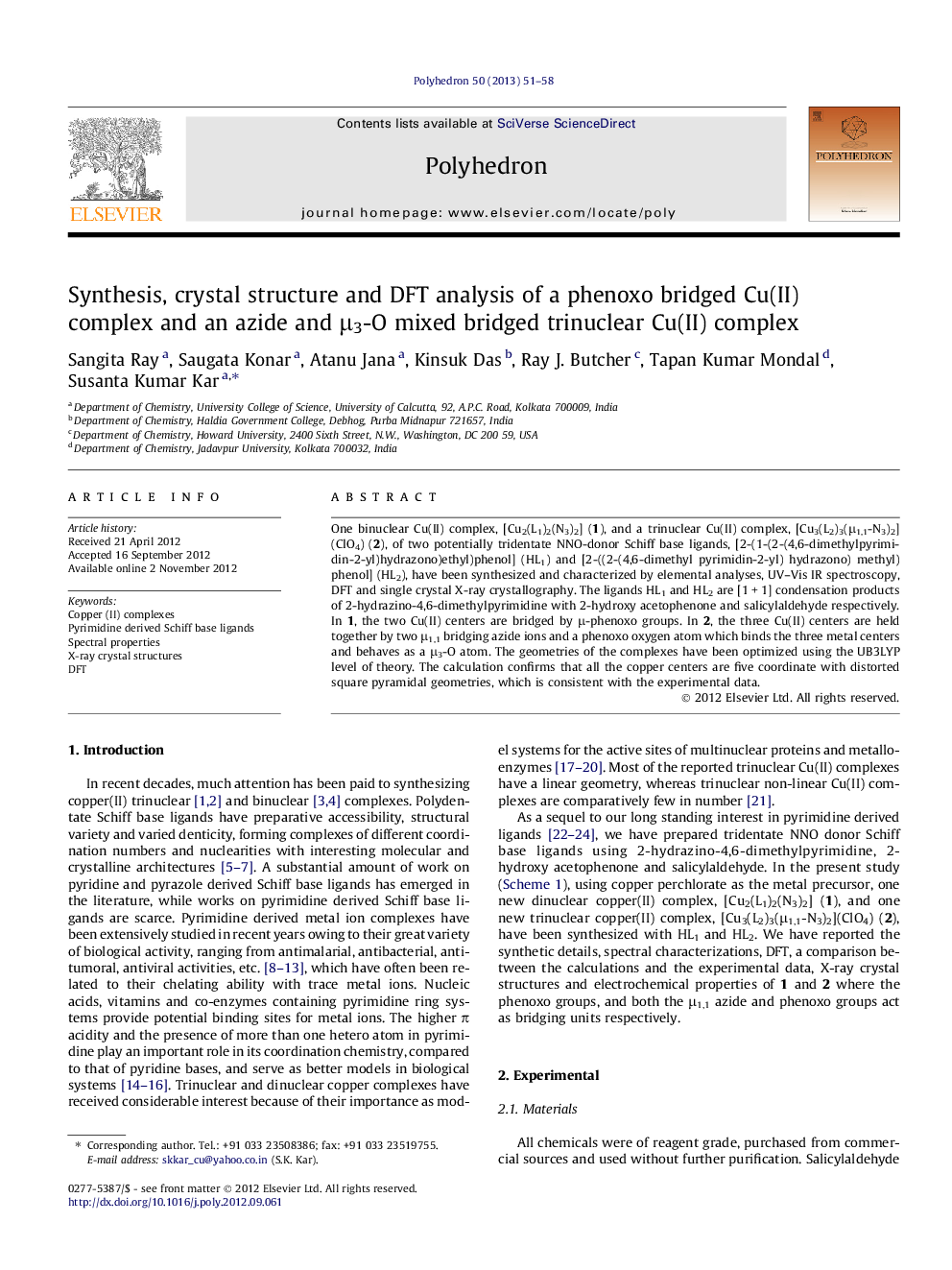| Article ID | Journal | Published Year | Pages | File Type |
|---|---|---|---|---|
| 1334621 | Polyhedron | 2013 | 8 Pages |
One binuclear Cu(II) complex, [Cu2(L1)2(N3)2] (1), and a trinuclear Cu(II) complex, [Cu3(L2)3(μ1,1N3)2](ClO4) (2), of two potentially tridentate NNO-donor Schiff base ligands, [2-(1-(2-(4,6-dimethylpyrimidin-2-yl)hydrazono)ethyl)phenol] (HL1) and [2-((2-(4,6-dimethyl pyrimidin-2-yl) hydrazono) methyl) phenol] (HL2), have been synthesized and characterized by elemental analyses, UV–Vis IR spectroscopy, DFT and single crystal X-ray crystallography. The ligands HL1 and HL2 are [1 + 1] condensation products of 2-hydrazino-4,6-dimethylpyrimidine with 2-hydroxy acetophenone and salicylaldehyde respectively. In 1, the two Cu(II) centers are bridged by μ-phenoxo groups. In 2, the three Cu(II) centers are held together by two μ1,1 bridging azide ions and a phenoxo oxygen atom which binds the three metal centers and behaves as a μ3-O atom. The geometries of the complexes have been optimized using the UB3LYP level of theory. The calculation confirms that all the copper centers are five coordinate with distorted square pyramidal geometries, which is consistent with the experimental data.
Graphical abstractThe syntheses, crystal structures and DFT analyses of a phenoxo bridged Cu(II) complex and an azide and μ3-O mixed bridged trinuclear Cu(II) complex of two NNO donor pyrimidine derived Schiff base ligands (HL1 and HL2) are reported. The DFT calculations show that all the copper centers are five coordinate with a distorted square pyramidal geometry, which is consistent with the experimental data.Figure optionsDownload full-size imageDownload as PowerPoint slideHighlights► Pyrimidine derived Schiff base ligands. ► X-ray crystallographic analysis of binuclear and trinuclear copper(II) complexes. ► Spectral properties, DFT.
